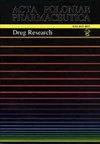富含血小板的血浆通过恢复人皮肤成纤维细胞中受损的β1-整合素信号传导和脯氨酸酶活性,对抗白细胞介素-1诱导的胶原生物合成抑制。
IF 0.4
4区 医学
Q4 PHARMACOLOGY & PHARMACY
引用次数: 0
摘要
虽然炎症是伤口愈合的第一步,但它有助于下调胶原蛋白的生物合成,延缓组织再生的过程。本研究旨在评估富血小板血浆(PRP)对培养的人皮肤成纤维细胞中白细胞介素-1β (IL-1β)依赖性胶原合成、脯氨酸酶活性和β1整合素信号传导的抑制作用。使用SmartPReP®2自体血小板浓缩+系统获得PRP。用IL-1β、PRP、透明质酸(HA)和IL-1β与PRP或HA的混合物混合培养的人皮肤成纤维细胞,测定胶原蛋白的生物合成和蛋白酶活性。采用免疫荧光生物成像技术评价β1整合素受体、环氧化酶-2 (COX-2)和核因子-κB (NF-κB)蛋白的表达。与对照细胞相比,用2% PRP孵育成纤维细胞24小时,胶原生物合成增加了约500%,β1-整合素受体的表达和脯氨酸酶活性显著增加。IL-1β处理后,胶原生物合成、β1-整合素受体表达和脯氨酸酶活性降低,COX-2和NF-κB表达显著升高。通过PRP或HA将这些过程恢复到控制值;然而,PRP被发现比HA更有效。结果发现,PRP通过恢复培养成纤维细胞中β1整合素受体的表达和脯氨酸酶活性,下调COX-2和NF-κB的表达,抵消了IL-1β依赖性的胶原合成抑制。数据表明,PRP唤起抗炎活性,这是组织再生所需要的。本文章由计算机程序翻译,如有差异,请以英文原文为准。
Platelet-rich plasma counteracts interleukin-1 induced inhibition of collagen biosynthesis through recovery of impaired β1-integrin signaling and prolidase activity in human skin fibroblasts.
Although inflammation is the first step in wound healing, it contributes to down-regulation of collagen biosynthesis delaying the process of tissue regeneration. The study was conducted to evaluate the effects of platelet-rich plasma (PRP) on interleukin-1β (IL-1β) – dependent inhibition of collagen synthesis, prolidase activity, and β1-integrin signaling in cultured human skin fibroblasts. PRP was obtain using the SmartPReP®2 Autologous Platelet Concentrate+ System. Collagen biosynthesis and prolidase activity were measured in confluent human skin fibroblast cultures with IL-1β, PRP, hyaluronic acid (HA), and mixtures of IL-1β with PRP or HA. Immunofluorescence bioimaging analysis was employed to evaluate expression of β1 integrin receptor, cyclooxygenase-2 (COX-2) and nuclear factor-κB (NF-κB) protein. Incubation of fibroblasts with 2% PRP for 24 h contributed to about 500% increase in collagen biosynthesis and a significant increase in the expression of β1-integrin receptor and prolidase activity, compared to the control cells. In the cells treated with IL-1β, collagen biosynthesis, β1-integrin receptor expression, and prolidase activity were decreased while COX-2 and NF-κB expressions were significantly increased. All these processes were recovered to control values by PRP or HA; however, PRP was found to act more effectively than HA. It was found that PRP counteracted IL-1β -dependent inhibition of collagen synthesis through recovery of β1-integrin receptor expression and prolidase activity and down-regulation of COX-2 and NF-κB expressions in cultured fibroblasts. The data suggest that PRP evoke anti-inflammatory activity that is desirable in tissue regeneration.
求助全文
通过发布文献求助,成功后即可免费获取论文全文。
去求助
来源期刊
CiteScore
0.80
自引率
0.00%
发文量
74
审稿时长
6-12 weeks
期刊介绍:
The international journal of the Polish Pharmaceutical Society is published in 6 issues a year. The journal offers Open Access publication of original research papers, short communications and reviews written in English, in all areas of pharmaceutical sciences. The following areas of pharmaceutical sciences are covered: Analysis, Biopharmacy, Drug Biochemistry, Drug Synthesis, Natural Drugs, Pharmaceutical Technology, Pharmacology and General.
A bimonthly appearing in English since 1994, which continues “Acta Poloniae Pharmaceutica”, whose first issue appeared in December 1937. The war halted the activity of the journal’s creators. Issuance of “Acta Poloniae Pharmaceutica” was resumed in 1947. From 1947 the journal appeared irregularly, initially as a quarterly, then a bimonthly. In the years 1963 – 1973 alongside the Polish version appeared the English edition of the journal. Starting from 1974 only works in English are published in the journal. Since 1995 the journal has been appearing very regularly in two-month intervals (six books a year). The journal publishes original works from all fields of pharmacy, summaries of postdoctoral dissertations and laboratory notes.

 求助内容:
求助内容: 应助结果提醒方式:
应助结果提醒方式:


